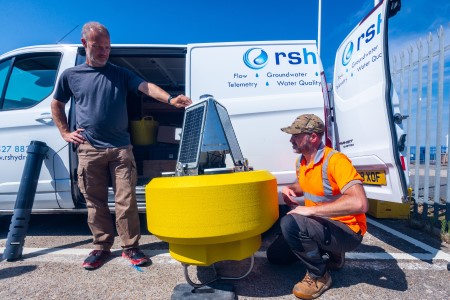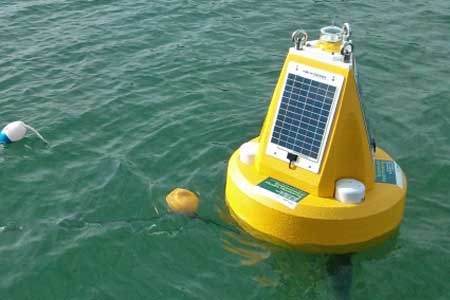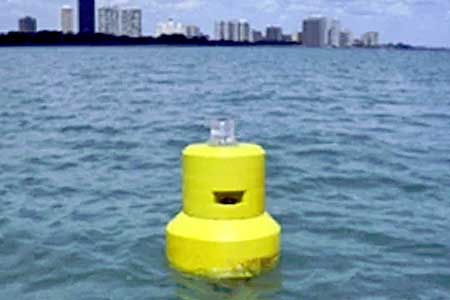Beach E. coli Monitoring

A refreshing bath to cool off from the hot sun is a favorite pastime for many a beachgoer. Nobody wants their day of fun and sun to turn into a nightmare, but a threat invisible to the human eye has the potential to do just that: E. coli and other fecal coliform bacteria. Fortunately, recent technological advances now make it possible to implement real-time beach E. coli monitoring systems that can help keep us safe.
Beach Safety

Typical Beach E. coli Monitoring System
While laboratory analysis can normally provide indication of unsafe conditions when adequately performed, the results may still arrive too late to prevent all incidence of infection to swimmers. To improve on existing methods and provide more comprehensive analysis, recent technological advances now allow for real-time, in-situ coliform measurement.
The novel instrument capable of achieving this is called the Proteus, a multiparameter water quality sonde that emerged from a collaboration between RS Hydro and the University of Birmingham in the UK. The Proteus leverages tryptophan-like fluorescence (TLF) known to be emitted by coliforms when excited at particular wavelengths.
A typical NexSens beach monitoring system implements the Proteus on a floating platform such as the CB-450 data buoy. The buoy is equipped with an X3 environmental data logger, which can relay real-time data via wireless telemetry. The instrument connects to the logger using a waterproof UW connector and can be safely mounted in a 914M deployment pipe, which also allows for access to the instrument for maintenance and calibration without the need to remove the buoy from the water.
The X3 transfers data to the WQData LIVE web datacenter in near real-time. The rich feature set of WQData LIVE includes options for viewing, manipulation, reporting and exporting of data, configuration of alarm notifications, data API, public portal and more.
In cases where other water quality parameters are of interest, the Proteus is capable of expansion with a large range of sensor types including pH, dissolved oxygen, blue-green algae, and others. The X3 data logger has multiple sensor ports, so the system can further be expanded with instruments such as weather stations, wave sensors, and acoustic Doppler current profilers (ADCP) for a comprehensive beach safety system.
Contact a NexSens Applications Engineer today to discuss your beach E. coli monitoring application.

Case Studies
Tackling Beach Safety with UK’s First Bacterial Monitoring Buoy
In the UK, Proteus Instruments and RS Hydro are working to ensure that swimmers can safely enjoy a bath at their favorite beach with the aid of groundbreaking real-time sensor technology. Buoys equipped with Proteus water quality multi-probes are helping to instantly deliver critical information on bacterial loads – data previously only available through lengthy laboratory analysis. This real-time data better informs beach managers and helps ensure the safety of swimmers.
Read MoreReal-Time Beach Monitoring
Canada’s Niagara Region in the province of Ontario is home to a lot of people, and many of them use at least one of the 25 beaches there. That puts a lot of responsibility on Niagara Region Public Health to make sure the water is safe for them as well as for visitors who come to see the nearby Niagara Falls. New capabilities from NexSens are leaps ahead of past techniques used for beach monitoring and tracking water health, say officials with the Region.
Read MoreCellular Data Buoys Predict E. Coli
The Chicago Park District is one of the largest municipal park managers in the US with 8,100 acres of green space spread across 580 different parks, including many beaches. At eight of its most popular beaches, the District has used NexSens cellular data buoys for many years in an effort to more quickly predict E. Coli levels that could necessitate beach closures. Data from all buoys in the network are posted to WQData LIVE and on the Chicago Park District website.
Read More






